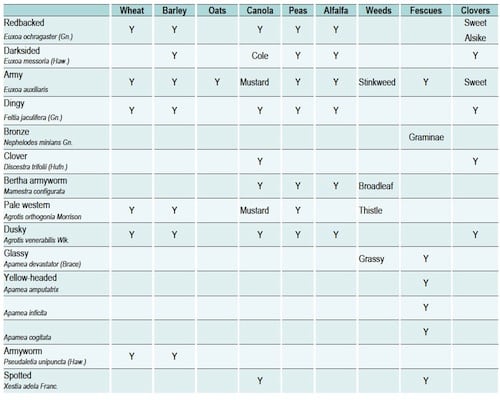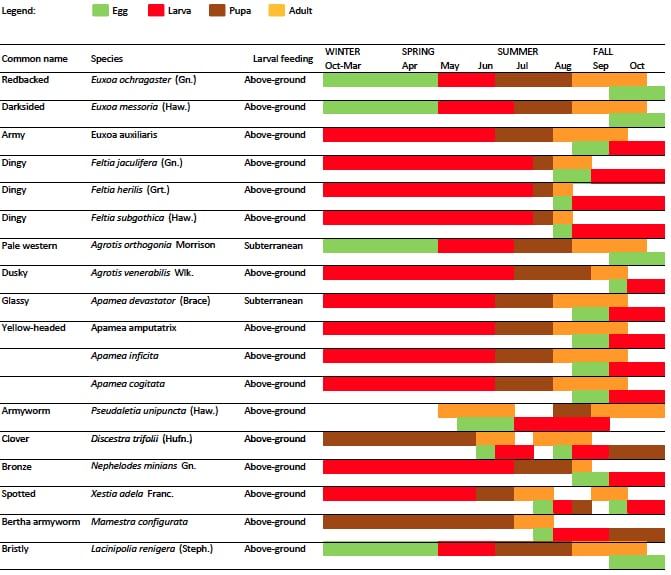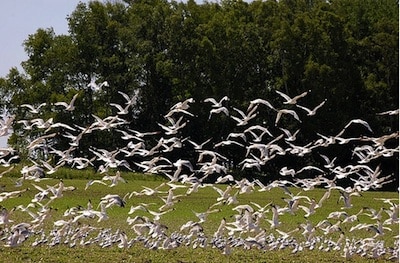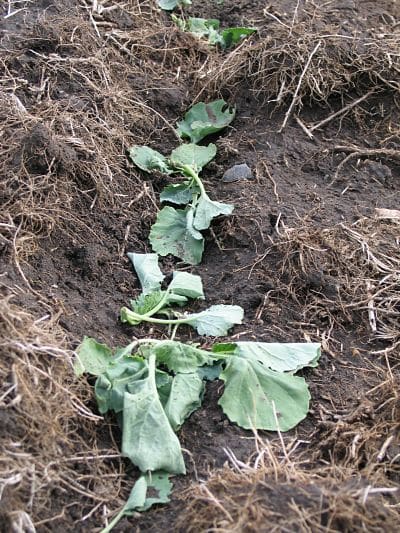Crop not coming up? It could be cutworms. Some species are already quite active — dingy, for example — and can consume canola plants before they even emerge or shortly thereafter. Dingy cutworms will also eat wheat, barley and peas, so scout all crops. (See the table below showing cutworm species and their preferred crops.)
Damage will start to show up in patches. Scout in the patches, digging around in the border areas between missing plants and healthy plants — that’s where the cutworms will be feeding.
Cutworms generally prefer drier soil, but will move up to the soil surface in wet conditions and do above ground feeding. Wet conditions are unlikely to drown them.
You may see more cutworm damage in fields that:
—were tilled
—were recently taken out of forage or pasture
—were in peas last year
—had a lot of weed and volunteer regrowth in the fall
Flocks of birds in a field are one clue that cutworm numbers could be high in that field.
When does the threat end? Cutworm larvae can be present for weeks and weeks, and may require multiple sprays in extreme cases. And while one species may go into pupation early, another species may keep feeding. There is no calendar date when threat ends. See the chart below for cutworm lifecycles.
You can help us learn more about cutworms. We have a lot to learn about cutworms. Our current challenge is sourcing and collecting cutworms to know which species are where, when and at what numbers. Read this Cutworm collection letter for more information on how you can help. For every sample submitted, your name will be entered into a draw to be awarded this fall.




